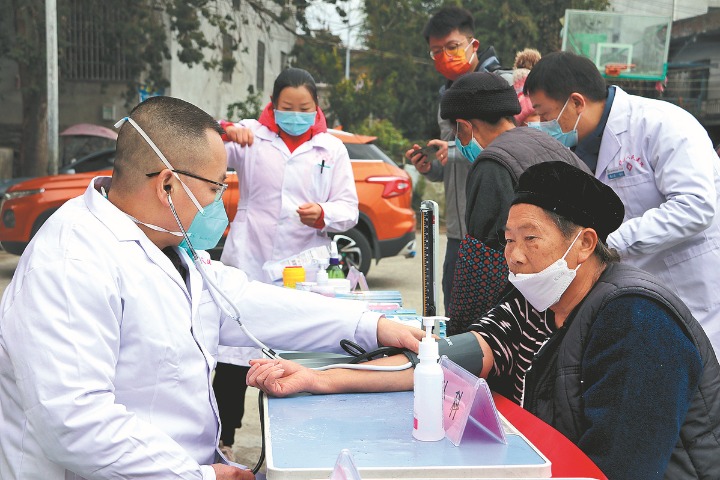Q&A: Latest optimized COVID-19 control policies

China further optimized its COVID-19 control policies in a 10-point notice released on Wednesday. Below are some of the key adjustments.
How are high-risk areas categorized?
High-risk areas should be accurately defined by building, unit, floor and household, and must not be arbitrarily expanded to entire residential complexes and neighborhoods. Any form of temporary lockdown is prohibited.
How is nucleic acid testing being rolled out?
The scope and frequency of nucleic acid testing should be further reduced and antigen tests can be used based on local circumstances. High-risk personnel should take tests as required while testing services should be offered to those in need.
Public places should no longer require proof of negative nucleic acid testing results or check the digital health codes of visitors except for elderly care and social welfare centers, medical facilities, nursery care centers and primary and middle schools.
Cross-regional travelers are also waived from these requirements and are no longer required to take tests upon arrival at their destinations.
Can infected patients isolate at home?
In most cases, asymptomatic and mild cases can be isolated at home when home-based protocols are met, and health monitoring should be strengthened so that they can be transferred to designated hospitals for treatment promptly if needed. They can also voluntarily opt to stay in centralized quarantine facilities.
How is COVID-19 vaccination being boosted among the elderly?
Local authorities are urged to create targeted plans to accelerate vaccination among those aged 60 and above, especially those aged 80 and above. Suggested measures include setting up temporary or mobile vaccination stations, establishing special lines for seniors to expedite inoculations, ramping up training for medical workers so they can better identify people with contraindications, and improving awareness campaigns to motivate people to get their shots.
How can safety and medical demands be ensured during local outbreaks?
Obstructing fire exits and apartment doors for the sake of COVID-19 control is strictly forbidden, and relevant authorities must ensure that people who are locked down have access to medical treatment and emergency escape routes.
Communities should connect with designated medical institutions to make medical services more convenient for minors, pregnant women, seniors who live alone and people with disabilities or chronic diseases. Psychological consultation and mental healthcare should also be stepped up for quarantined people, COVID-19 patients and frontline workers.
How will schools operate?
Schools with no new infections should carry out in-person classes and activities as usual, and supermarkets, canteens, sports stadiums and libraries on campus should be kept open. Schools experiencing an outbreak should designate at-risk areas precisely and ensure normal teaching in the remaining areas.
Please feel free to contact us by sending your questions to question@chinadaily.com.cn or commenting on China Daily app. We will ask experts to answer them.














